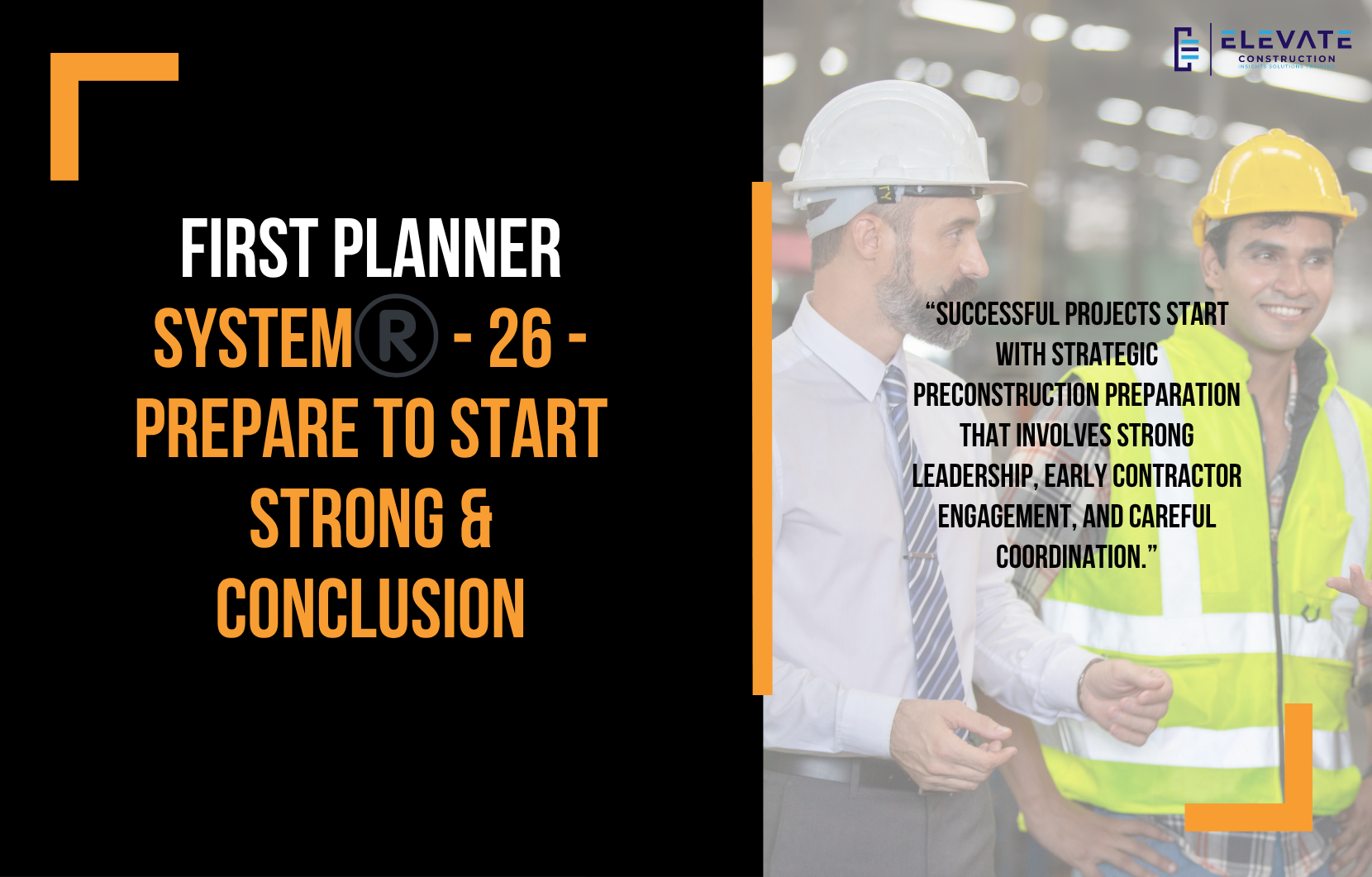Prepare to Start Strong: Setting the Stage for Project Success
The time to accelerate isn’t when dozens of trades are on-site, tangled in dependencies. The real opportunity to gain time is right at the start when only a few trades are involved, and you can set the pace for the entire project.
Pre-Construction Meeting with the Owner
A successful kickoff begins with a thorough pre-construction meeting involving the owner, their representatives, and any inspectors. This meeting sets expectations, ensures alignment, and establishes a strong foundation for the project. How you start will heavily influence the project’s trajectory.
Prepare Your First Contractors Early
Begin at least six weeks before project start. Confirm that all first contractors are ready to mobilize with the right resources, equipment, and clear plans. The early stages are where momentum is built.
Order and Secure Everything in Advance
- Site Support Items: Forklifts, buggies, dumpsters, restrooms, and hand wash stations.
- Startup Materials: Signs, job startup kits, safety stickers, and office equipment.
- Administrative Readiness: Contracts, insurance, and bonds for all early trades.
Schedule Critical Early Activities
These should run in parallel with first-trade mobilization:
- Pothole all utility crossings.
- As-built and map all underground utilities.
- Install SWIP BMPs (Best Management Practices).
- Begin permanent worker bathroom construction.
- Establish a staging yard and parking areas.
- Set up daily huddles and weekly planning meetings.
- Start worker orientations.
- Install trailers and connect temporary utilities.
Post All Required Documentation On-Site
Permits, plans, safety protocols, utility shut-offs, emergency contacts, and quality plans must be clearly posted before work begins.
Notify the Owner and Neighbors
Send an impact notice well before work starts so everyone knows when and how the project will begin.
The System Behind Success
If your startup process is well-prepared and your component score is above 80%, you’ve built a system that will deliver results. The real key isn’t administrative processes like RFIs or submittals they’re necessary but not transformative. The game changer is a builder’s approach: professional behaviors, disciplined planning, and a refusal to tolerate mediocrity.
This industry won’t be improved by outside forces, technology alone, or wishful thinking. Change begins with you the builder who chooses to stand up, lead, and insist on excellence.
Key Takeaway:
Successful projects start with strategic preconstruction preparation that involves strong leadership, early contractor engagement, and careful coordination. By securing resources and managing planning and logistics before work begins, teams create the momentum and clarity needed to avoid delays and deliver projects on time, on budget, and with quality.
If you want to learn more we have:
-Takt Virtual Training: (Click here)
-Check out our Youtube channel for more info: (Click here)
-Listen to the Elevate Construction podcast: (Click here)
-Check out our training programs and certifications: (Click here)
-The Takt Book: (Click here)
Discover Jason’s Expertise:
Meet Jason Schroeder, the driving force behind Elevate Construction IST. As the company’s owner and principal consultant, he’s dedicated to taking construction to new heights. With a wealth of industry experience, he’s crafted the Field Engineer Boot Camp and Superintendent Boot Camp – intensive training programs engineered to cultivate top-tier leaders capable of steering their teams towards success. Jason’s vision? To expand his training initiatives across the nation, empowering construction firms to soar to unprecedented levels of excellence.
On we go










